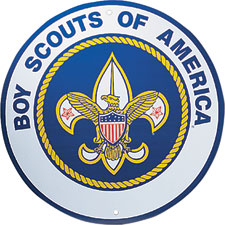Boy Scouts Lead the Charge on Cycling Safety
 When Better Bike reader and scouting parent Jeffrey Courion hipped us to the Boy Scouts of America cycling merit badge, we couldn’t have been more astonished at the rigorous paces the organization puts their charges through for the recognition. It puts to shame state DMV advice, city ‘ride safe’ pages, and even League of American Bicyclists ride skills classes. If every urban rider earned their merit badge, we’d have many more cyclists and much safer cyclists too.
When Better Bike reader and scouting parent Jeffrey Courion hipped us to the Boy Scouts of America cycling merit badge, we couldn’t have been more astonished at the rigorous paces the organization puts their charges through for the recognition. It puts to shame state DMV advice, city ‘ride safe’ pages, and even League of American Bicyclists ride skills classes. If every urban rider earned their merit badge, we’d have many more cyclists and much safer cyclists too.
One expects that Boy Scouts merit badges puts character-building and community health & safety foremost. Indeed since 1910, the Boy Scouts of America has prepared young men to become “responsible, participating citizens and leaders,” with merit badges introduced shortly after in 1911. The Boy Scouts program as a whole develops character, citizenship, and mental and physical fitness. The Scout oath:
On my honor I will do my best to do my duty to God and my country and to obey the Scout Law; to help other people at all times; to keep myself physically strong, mentally awake, and morally straight.
The merit badge, however, cultivates specific skills, infusing confidence and highlighting safety and leadership across a variety of activity areas. An astonishing 117 million merit badges have been awarded since the first one in 1948, with swimming the most popular badge sporting activity (six million awarded). Cycling has a bit of catching up to do – only “hundreds of thousands” have been awarded.
 Looking at the cycling merit badge, we’re utterly flabbergasted at the extent and depth of the requirements:
Looking at the cycling merit badge, we’re utterly flabbergasted at the extent and depth of the requirements:
- First aid for injuries that could occur while cycling, including hypothermia and dehydration;
- Emergency repairs, including tire changes, as well as inspection and adjustment of the major components like brakes, seat, and lube points;
- Road skills, from mount-up to road rule complexities like continuing straight at right-turn only lanes, as well as book knowledge of the laws;
- And the planning and completion of 10, 15, and 25 mile rides – not just once but two times each!
Not least, the requirements page lists a rather complete reference section including the seminal book on vehicular cycling, John Forester’s Effective Cycling. Incredible. Most folks on two wheels today learned the bare basics (keeping upright and braking) when they were five years old. Few of us have taken road skills classes. And very few of those on the road – even veteran cyclists – have a merit badge.
Perhaps we can add yet one more requirement to the list – effective civic advocacy. We need to ensure that our Scouts (and everybody else) have half of a chance to get where they’re going on our traffic-choked urban streets. So let’s get the Scouts out front on it. To tick off the civic requirement, the would-be merit badge earner would need to bend the ear of a policymaker or transportation professional to get them to put half the effort into making safer streets that the Scout will put in to his cycling badge. Got a suggest about how to structure the civic advocacy requirement of a Boy Scouts of America cycling merit badge? We’re all ears!